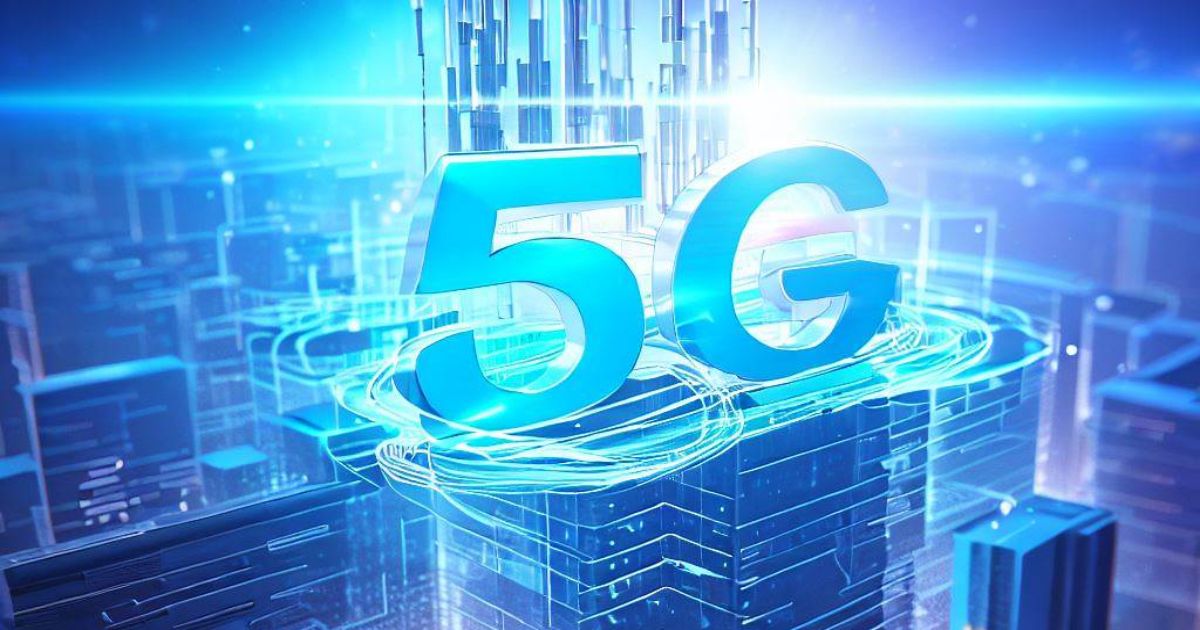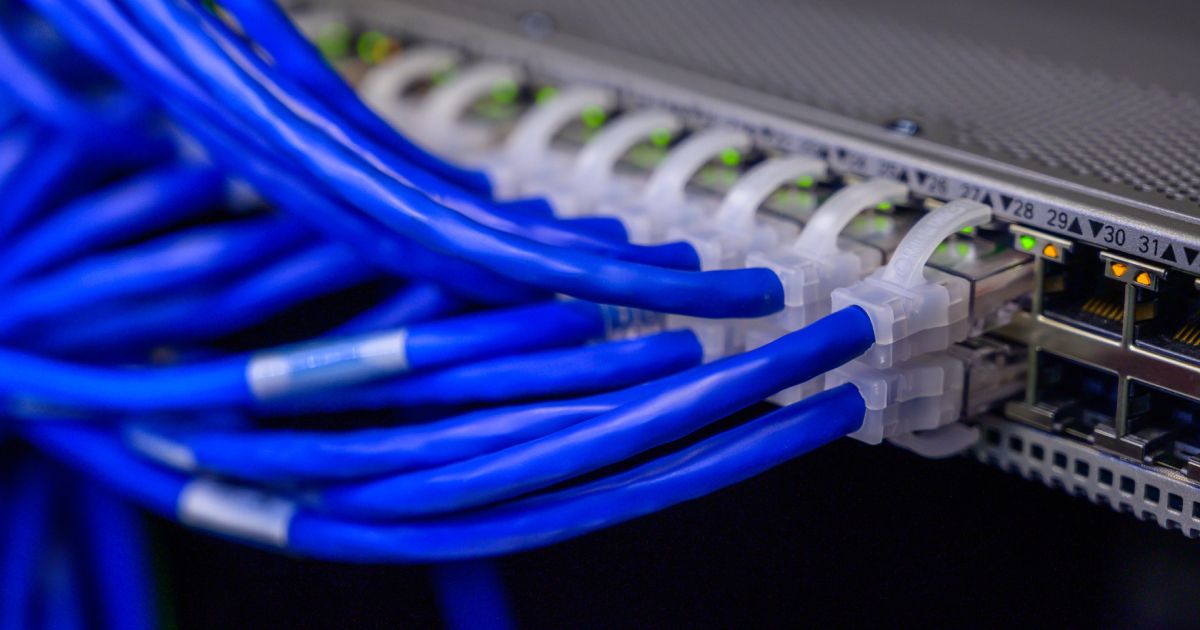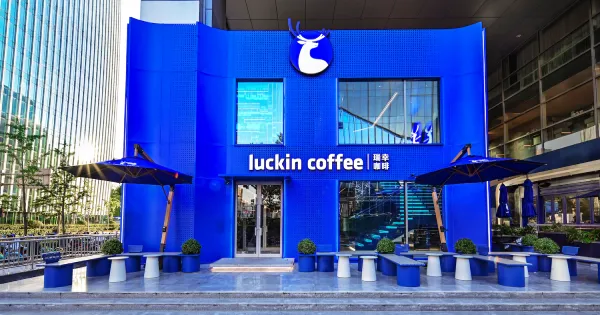What is 5G? 5 Benefits You Need to Know

In recent years, 5G technology has become a buzzword in the tech industry, promising revolutionary advancements in connectivity and communication.
As the fifth generation of wireless technology, 5G boasts a myriad of benefits that are poised to transform various sectors and improve our daily lives.
From faster speeds to enhanced reliability, let's explore the key advantages of 5G and how it is set to shape the future of communication and beyond.
1) Blazing-Fast Speeds

One of the most groundbreaking advantages of 5G technology lies in its extraordinary speed, which marks a significant leap forward from its predecessor, 4G LTE. With 5G's incredible capability to deliver data at lightning-fast speeds, it can reach up to 100 times faster than the previous generation. This remarkable improvement in speed opens the doors to a multitude of possibilities for consumers and businesses alike.
For the modern digital society, this means experiencing instantaneous downloads of files, applications, and media content, reducing waiting times to mere seconds. Streaming high-quality videos in 4K resolution becomes a seamless and buffer-free experience, bringing cinematic entertainment right to our fingertips. Online gaming, with its increasing demand for real-time responsiveness and seamless multiplayer experiences, is revolutionized by 5G's unprecedented speed, ensuring smooth and immersive gameplay without any noticeable lag.
Furthermore, 5G's unrivaled speed has far-reaching implications across various industries. In the realm of healthcare, the rapid exchange of large medical datasets between healthcare professionals and devices enables swift diagnoses and enhanced telemedicine applications. This facilitates remote consultations and surgeries, connecting patients with specialists located miles away, thus increasing access to specialized medical care.
Similarly, in the field of education, the ultra-fast speed of 5G enables seamless remote learning experiences, where students can access high-definition educational content and interactive resources with ease.
In the corporate world, video conferencing and virtual meetings become more productive and efficient as the clarity and real-time exchange of data enable more engaging collaboration among teams across the globe. These possibilities fuel the digital transformation of various sectors, ultimately driving innovation and enhancing overall productivity and efficiency.
2) Enhanced Connectivity

The emergence of 5G networks marks a significant milestone in the evolution of the Internet of Things (IoT) ecosystem. The vast number of connected devices that form the IoT network demands a robust and reliable infrastructure to handle the immense data traffic efficiently. Here, 5G shines as a transformative technology designed precisely to meet the demands of the IoT era. Its advanced architecture, which supports a massive number of simultaneous connections, paves the way for a highly interconnected world where devices, sensors, and machines communicate seamlessly. The enhanced connectivity provided by 5G not only ensures smooth data transfer but also minimizes latency, enabling real-time interactions between devices. As the IoT continues to expand into various industries, from healthcare and transportation to manufacturing and agriculture, 5G's capabilities will play a pivotal role in enabling a new generation of smart applications and services that bring unparalleled convenience, efficiency, and automation to our daily lives.
One of the most exciting implications of 5G's enhanced connectivity lies in its transformative impact on smart homes and smart cities. With 5G's ability to handle a massive number of connected devices with minimal delay, smart homes become more intelligent and responsive. Home automation systems equipped with smart devices, such as thermostats, security cameras, lighting controls, and appliances, can communicate seamlessly over 5G networks, enabling homeowners to manage and monitor their homes remotely. The convenience of controlling home functions from a smartphone or a smart speaker becomes a reality, enhancing energy efficiency and security while providing a seamless living experience.
In the context of smart cities, 5G's capabilities become instrumental in optimizing urban infrastructure and services. Smart city initiatives leverage 5G networks to enable real-time data exchange among countless IoT devices and sensors scattered throughout the city. This empowers city planners, public utilities, and emergency services to respond swiftly to dynamic urban challenges. For instance, traffic management systems can gather data from connected vehicles and traffic sensors to optimize traffic flow, reducing congestion and enhancing safety. Additionally, smart lighting systems with built-in sensors can adjust illumination levels based on real-time foot traffic, thus conserving energy while providing adequate lighting for pedestrians. By embracing 5G technology, smart cities foster more sustainable, livable environments that address critical urban challenges and enrich the lives of their residents.
3) Improved Reliability

In the realm of connectivity, 5G represents a paradigm shift, elevating reliability to unprecedented levels. This is achieved through the incorporation of advanced signal processing techniques and the utilization of multiple frequency bands, both of which work in tandem to ensure a highly robust and consistent connection. This newfound reliability becomes a game-changer, especially in urban areas characterized by high population densities and dense network environments. In these bustling metropolitan landscapes, the potential for network congestion and signal interference is considerably higher. However, 5G's sophisticated signal processing capabilities intelligently manage data traffic, allowing for seamless and uninterrupted connectivity even in the most crowded urban centers.
This remarkable enhancement in reliability has a profound impact on a multitude of industries, where the successful transmission and receipt of data hold utmost importance. For instance, in healthcare, where real-time data transmission is critical for telemedicine, remote patient monitoring, and advanced surgical procedures, 5G's robust connectivity enables seamless communication between medical professionals and patients. This enables faster diagnosis, treatment, and decision-making, ultimately improving patient outcomes.
Similarly, in the realm of autonomous vehicles, where split-second decisions can mean the difference between safety and danger, 5G's reliability is instrumental in facilitating vehicle-to-vehicle (V2V) and vehicle-to-infrastructure (V2I) communication. Autonomous vehicles can access and analyze real-time data from multiple sources, making informed decisions about navigation, route optimization, and potential hazards on the road.
Moreover, the industrial automation sector greatly benefits from 5G's unwavering reliability. Manufacturing facilities and industrial complexes rely heavily on precise data transmission and real-time control for robotic systems and machinery. By leveraging 5G's stable and dependable connectivity, industrial automation processes become more efficient, productive, and safe. The seamless communication between interconnected devices and systems allows for improved workflow coordination, predictive maintenance, and streamlined operations, resulting in increased productivity and reduced downtime.
As industries continue to evolve towards a more connected and automated future, 5G's reliability serves as the bedrock upon which these transformative advancements are built.
4) Lower Latency

The introduction of 5G technology ushers in a new era of unparalleled low latency, marking a true game-changer, particularly for applications that hinge on instantaneous real-time responses. Latency, a key metric in data transmission, denotes the time it takes for information to traverse from its source to the destination and back. With the advent of 5G, this latency is reduced to an astonishingly short duration of as little as one millisecond. This unprecedented reduction in latency significantly enhances the responsiveness of various cutting-edge applications, transforming how we interact with technology.
One of the domains that immensely benefits from 5G's ultra-low latency is the realm of immersive experiences, particularly in virtual reality (VR) and augmented reality (AR) applications. With previous generations of connectivity, users often experienced a noticeable lag or delay when engaging with virtual environments or overlaying digital information on the real world. However, 5G's lightning-fast responsiveness eradicates these delays, providing users with an incredibly smooth and lifelike experience. Gamers, for instance, can now indulge in cloud-based gaming platforms with minimal input lag, resulting in precise and real-time actions within the gaming environment. For professionals involved in remote robotic surgery, 5G's low latency ensures that their commands to robotic surgical systems are executed instantaneously, mimicking precise movements with minimal delay and enhancing surgical accuracy and safety.
The impact of 5G's reduced latency goes beyond entertainment and healthcare, extending to various industries and use cases. In industrial automation and robotics, where precise real-time control is crucial for coordination between machines and production processes, 5G's responsiveness enables seamless data exchange and immediate adjustments to optimize workflows.
Additionally, in smart transportation systems, such as autonomous vehicles, ultra-low latency is indispensable for enabling rapid communication between vehicles and surrounding infrastructure. As autonomous vehicles navigate through dynamic traffic situations, the near-instantaneous response provided by 5G ensures safe and efficient decision-making. As the proliferation of 5G networks continues, the transformative impact of its reduced latency becomes increasingly evident across an array of innovative applications, revolutionizing how we interact with the digital realm and redefining the possibilities for future technological advancements.
5) Empowering Technological Advancements

Beyond its remarkable impact on communication, 5G stands as the formidable backbone that underpins a new wave of transformative technologies, redefining the landscape of innovation. Among these groundbreaking advancements, artificial intelligence (AI) stands at the forefront, poised to revolutionize countless industries. The combination of 5G's high-speed and low-latency capabilities sets the stage for AI applications to reach unparalleled heights of performance and responsiveness. The convergence of 5G and AI unlocks a realm of possibilities, as the swift exchange of data between devices and cloud systems empowers AI algorithms with a wealth of information, accelerating their learning processes and enabling them to make informed decisions with remarkable efficiency.
Furthermore, the fusion of 5G and AI serves as a catalyst for edge computing, a paradigm-shifting approach that brings data processing closer to the source, at the edge of the network. Traditional cloud computing often involves transmitting vast amounts of data to centralized data centers for processing, resulting in latency and network congestion. However, with 5G's ability to handle the surge of data generated by connected devices in real-time, edge computing emerges as a compelling solution that addresses these challenges head-on. By processing data closer to where it's generated, edge computing minimizes the latency associated with data transmission, allowing for faster decision-making and immediate responses. This proves especially critical in time-sensitive applications, such as autonomous vehicles, where split-second decisions can mean the difference between safety and risk. With 5G empowering the seamless communication between edge devices and central cloud systems, the potential of edge computing expands exponentially, unlocking unprecedented opportunities for industries seeking greater efficiency and faster real-time insights.
The fusion of 5G, AI, and edge computing spearheads a new era of intelligent connectivity and computing capabilities, inspiring innovative applications that redefine the boundaries of technology across sectors. In fields like healthcare, 5G-enabled AI-driven medical diagnostics revolutionize patient care by analyzing vast medical data sets in real-time, providing more accurate and timely diagnoses. In manufacturing, AI-powered predictive maintenance, supported by 5G's connectivity, optimizes industrial processes by anticipating equipment failures and minimizing costly downtime. Additionally, in smart cities, the integration of AI and 5G fuels intelligent traffic management systems, optimizing transportation flow and reducing congestion. As the harmonious integration of these transformative technologies progresses, the potential for groundbreaking solutions across diverse industries grows exponentially, solidifying 5G's position as the bedrock of the future digital landscape.
Final Thoughts
In conclusion, the benefits of 5G technology extend far beyond faster download speeds. Its enhanced connectivity, reliability, lower latency, and support for emerging technologies are set to redefine various industries, paving the way for a more connected, intelligent, and efficient future.
As 5G networks continue to expand and evolve, we can expect to witness a new era of technological advancements that will shape the way we live, work, and interact with technology like never before.





